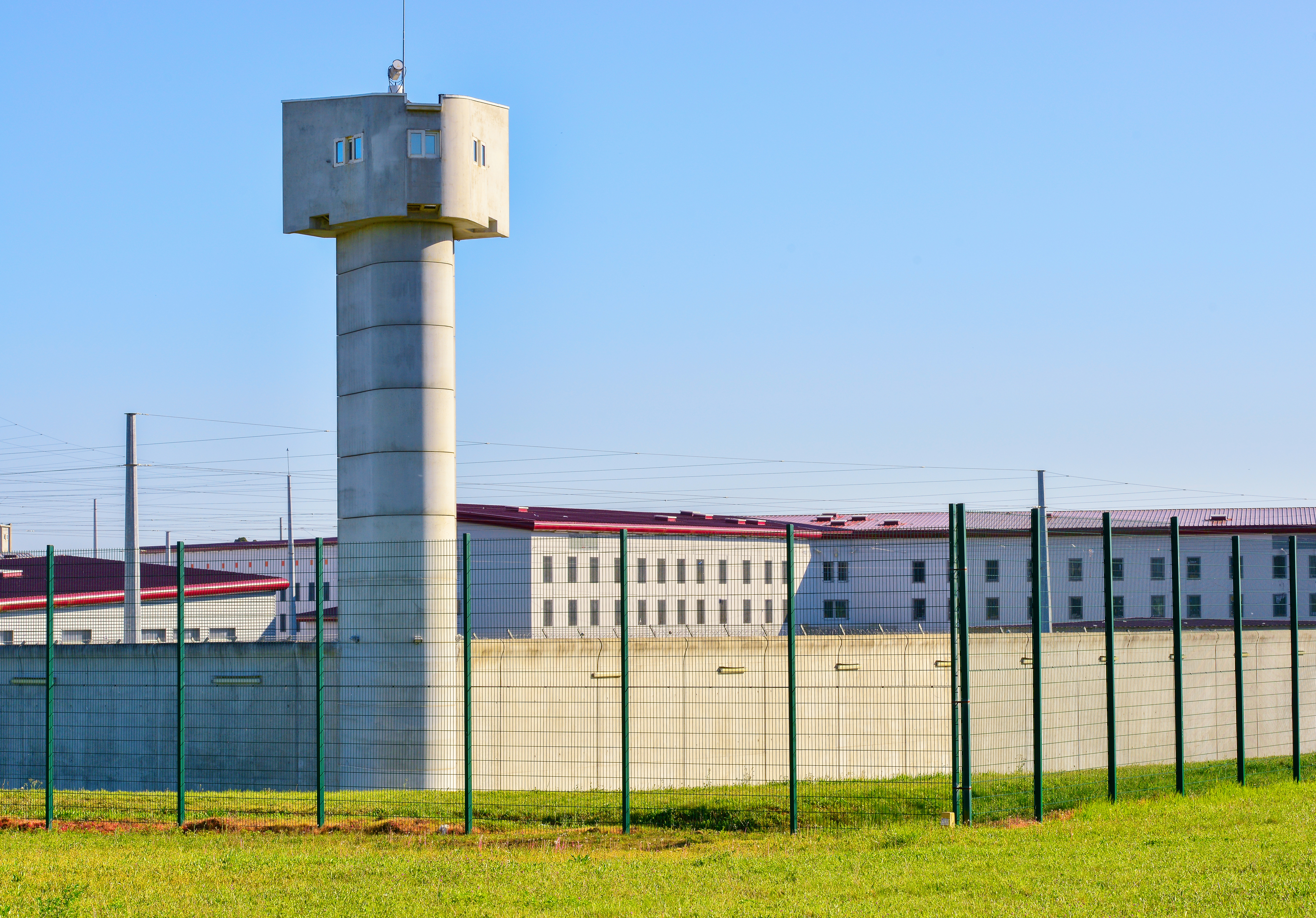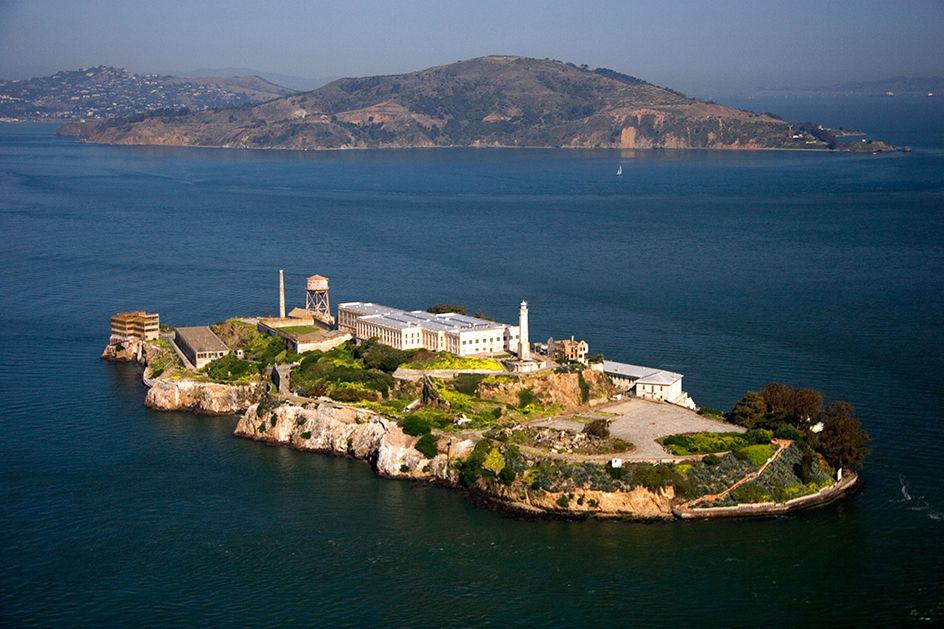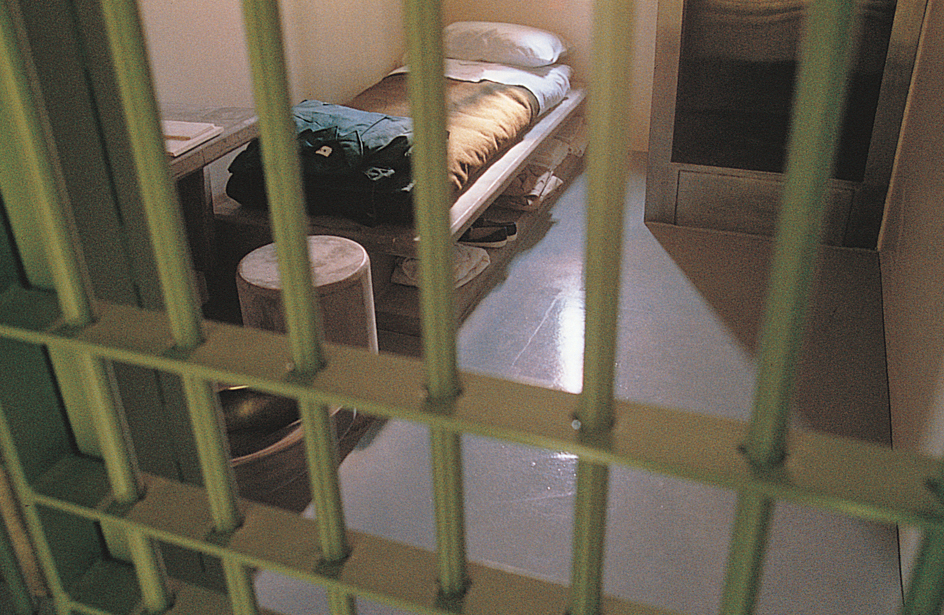Prison is an institution for confining and punishing people who have been convicted of crimes. Prisons punish criminals by severely restricting their freedom. For example, prisons limit where inmates (prisoners) may go, what they may do, and with whom they may associate. Inmates serve sentences ranging from a year to the rest of their lives. Prisons are important because they help protect society from dangerous criminals.
Prisons throughout the world hold about 10 million people. The United States holds more prisoners than any other country. Denmark, Finland, India, Indonesia, Japan, the Netherlands, Norway, and Sweden have relatively low prison populations.
In some countries, such as Israel and the Philippines, the federal government operates the prisons. The major political divisions of the United Kingdom each have their own prison agency, called the Prison Service in England and Wales, the Scottish Prison Service, and the Northern Ireland Prison Service. In Australia and India, the states have responsibility for running the prisons. In Canada and the United States, both the federal government and the state or provincial governments maintain prison systems. The Federal Bureau of Prisons oversees federal prisons in the United States, and the Correctional Service of Canada operates those in Canada.
Types of correctional institutions
There are various names for institutions that confine convicted lawbreakers or people awaiting trial. The most common terms include penitentiaries, correctional centers, correctional facilities, and reformatories. Many people consider prisons to be only those institutions that confine adults convicted of major crimes. Institutions for youthful offenders include training schools and juvenile detention centers. In addition, such facilities as city and county jails, federal detention centers, and metropolitan correctional centers hold people who are awaiting trial or serving sentences for minor offenses. Most prisons house only male inmates or only female inmates.
Experts classify prisons by the degree of security or control they provide. The main types are (1) maximum security prisons, (2) medium security prisons, and (3) minimum security prisons.
Maximum security prisons
generally hold prisoners serving long sentences. These prisoners have committed murder, robbery, kidnapping, treason, or other felonies (serious crimes).
High stone walls or strong chain fences surround most maximum security prisons. Many of these barriers have electronic detection devices and powerful spotlights. Prisoners live in cells with steel bars or heavy gratings on one side. Many cells do not have windows. Inmates eat in their cells or in a dining hall. Prison officials limit the length and number of visits by family and friends. During such visits, thick glass or wire screens separate some prisoners and visitors to prevent the exchange of such items as drugs and weapons. Other prisoners and visitors are allowed to be together. Some prisons use X-ray devices to check visitors for weapons.
Since the mid-1980’s, a number of prison systems have developed supermaximum security prisons, often called supermax prisons. These prisons hold prisoners who cannot be controlled by other means. Common features of supermax prisons include total separation, restricted movement, and limited access to staff members and other inmates.

Medium security prisons
hold inmates who have committed either felonies or misdemeanors (crimes less serious than felonies). Common misdemeanors include assaults and small thefts. The inmates in medium security prisons are generally less dangerous than inmates of maximum security prisons. Some medium security prisons resemble campuses, though they may be surrounded by fences with guard towers. Inmates may live in dormitories or in private rooms. Many of these prisons have educational and athletic facilities.
Minimum security prisons
are the most open and least restrictive prisons. Inmates of minimum security prisons are not considered dangerous and are unlikely to flee prison. Many of these inmates were convicted of such nonviolent crimes as forgery, cheating on taxes, business theft, perjury, and obstruction of justice. They live in comfortable rooms and usually may move about within the prison as they please. Minimum security prisons range from large institutions to small farm or forestry camps. Some of these prisons have tennis courts, swimming pools, and golf courses.
Juvenile correctional institutions
generally hold offenders under the age of 18. The institutions keep young prisoners from the bad influence of dangerous adult criminals. Juvenile detention centers, called remand centres in the United Kingdom, hold young people who have been accused of committing crimes and are awaiting trial. Training schools are institutions where convicted youths serve their sentences. Most of these sentences last about a year. Training schools offer counseling, education, job training, and recreation. The inmates live and eat together in cottages or dormitories that hold fewer than 20 prisoners.
Jails,
also spelled gaols, hold people awaiting trial. They also house people convicted of the least serious crimes. Jail inmates include people accused of serious crimes as well as such offenders as disorderly and intoxicated persons. Prisoners may stay in jail for only a few hours or for more than a year.
Conditions in most jails are worse than those in other types of correctional institutions. Jails often are overcrowded, and the same facility may hold both men and women, and adults as well as juveniles. Some prisoners are kept in small cells, and others are crowded together in large cells. Many jails do not meet minimum health and safety standards, and some cells lack a sink or a toilet. Most jails have few professionally trained staff members.
How prisons operate
Prisons have four major purposes. These purposes are (1) retribution, (2) incapacitation, (3) deterrence, and (4) rehabilitation. Retribution means punishment for crimes against society. Depriving criminals of their freedom is a way of making them pay a debt to society for their crimes. Incapacitation refers to the removal of criminals from society so they can no longer harm innocent people. Deterrence means the prevention of future crime. Supporters of deterrence hope that prisons provide warnings to potential criminals, and that the possibility of going to prison will discourage people from breaking the law. Rehabilitation refers to activities designed to change criminals into law-abiding citizens. Rehabilitations efforts may include providing educational courses, teaching job skills, and offering counseling with a psychologist or social worker.
Through the years, prison systems have stressed the four major purposes differently. As a result, prisons differ in the makeup of their staffs, the design of their buildings, and their operations.
The prison staff
is headed by a warden, superintendent, or governor who directs the operation of the prison. This official is held responsible if there are such problems as riots, escapes, prison mismanagement, and brutality toward prisoners. Prison guards, also called warders, observe and supervise the inmates. Many prison guards take an examination to qualify for their jobs. Many prison staffs also include teachers, social workers, psychologists, and doctors and nurses.
Prison buildings
vary greatly in design. Prisons built in the radial design resemble the hub and spokes of a wheel. The cells, dining hall, and other facilities extend from the control center at the hub. Guards at the control center can observe all activity within the building. Most maximum security prisons use the telephone pole design. They consist of a long corridor crossed by shorter corridors that hold the cells and other facilities. Prisoners must use the central corridor when they move from place to place. This design allows close supervision by the guards. The high-rise design is a vertical version of the telephone pole design. Prisoners move from floor to floor by elevator. The campus design resembles a group of small apartment buildings around a town square. It is commonly used for juvenile institutions and may include such facilities as a church, a school, and a library.

Prison cells
are generally small and simply furnished. Some may contain only a bed, a sink, and a toilet. Prisoners who are hard to control may be placed for a time in a segregation cell (solitary confinement). Most segregation cells have dim lighting, poor ventilation, and inadequate sanitary facilities. Segregation cells may have only a mattress on the floor or a stone slab on which the prisoner sleeps.

Special facilities and services
may be provided for inmates, depending on the views of prison officials and the availability of funds. Prisons may have libraries and athletic facilities for inmates. Prisons may offer counseling, medical care, motion pictures, and religious services. Some prisons offer courses for high school or college credit, or provide job training in such fields as automobile repair and carpentry.
Some prisons operate their own farms or factories and use inmates as workers. Some of these prisons pay inmates for their labor. By providing goods for the prisoners’ use, prison farms and factories help prisons reduce their operating costs. China, Poland, and the Netherlands, in particular, emphasize reform through prison labor. Some prisons run work-release programs, in which trusted inmates may leave prison during the day for an outside job.
History
Early prisons.
Before the 1700’s, governments seldom imprisoned criminals for punishment. Instead, they imprisoned people who were awaiting trial or punishment. Common punishments at that time included branding, fines, whipping, and capital punishment (execution). The authorities punished most offenders in public to discourage others from breaking the law.
English and French rulers kept their political enemies in such prisons as the Tower of London and the Bastille in Paris. People who owed money went to debtors’ prisons. In many cases, offenders’ families could stay with them and come and go as they pleased. But the debtors had to remain in prison until their debts were settled.
During the 1700’s, many people criticized the use of executions and other harsh punishments. These critics included the British judge Sir William Blackstone. As a result, governments turned more and more to imprisonment as a form of punishment.
Early prison reform.
Early prisons were dark, dirty, and overcrowded. They locked all types of prisoners together, including men, women, and children, plus dangerous criminals, debtors, and the insane. During the late 1700’s, the British reformer John Howard toured Europe to observe prison conditions. His book The State of the Prisons in England and Wales (1777) influenced the passage of a law that led to the construction of the first British prisons designed partly for reform. These prisons attempted to make their inmates feel penitent (sorry for doing wrong) and became known as penitentiaries.
In 1787, a group of influential Philadelphians, mostly Quakers, formed the Philadelphia Society for Alleviating the Miseries of Public Prisons (now the Pennsylvania Prison Society). They believed that some criminals could be reformed through hard work and meditation. The Quakers urged that dangerous criminals be held separately from nonviolent offenders and men and women prisoners be kept apart. These ideas became known as the Pennsylvania System, and were put into practice in 1790 at Philadelphia’s Walnut Street Jail. Historians consider this jail the first prison in the United States.
The Pennsylvania System was the first attempt to rehabilitate criminals by classifying and separating them on the basis of their crimes. As a result, the most dangerous inmates spent all their time alone in their cells. In time, however, the system failed, chiefly because overcrowding made such separation impossible. Some inmates in this system became insane because of long years of isolation.
During the 1800’s,
New York prison officials developed two major systems of prison organization—the Auburn System and the Elmira System. The Auburn System, introduced at Auburn (New York) Prison in 1821, became widely adopted. Under this system, prisoners stayed in solitary confinement at night and worked together during the day. The system emphasized silence. Prisoners could not speak to, or even look at, one another. Prison officials hoped that this silence and isolation would cause inmates to think about their crimes and reform. They believed that the prisoners’ spirit must be broken before reform could take place. However, the system failed partly because the rigid rules and isolation drove inmates insane.
In 1876, the Elmira (New York) Reformatory opened as a model prison for offenders between the ages of 16 and 30. The Elmira System made use of indeterminate (flexible) sentences and allowed prisoners to earn parole (early release) for good behavior. In addition, it offered physical and military training and an educational program. The reformatory’s emphasis on rehabilitation through education became its major contribution. However, it did not fully achieve its high expectations, largely because it judged inmates on their prison behavior instead of on their actual fitness for release. Studies showed that most inmates committed new crimes after their release.
Reforms in the 1900’s
led to further improvement of prisons. In the 1930’s, for example, prisons began to develop rehabilitation programs based on the background, personality, and physical condition of the individual inmate. This approach made rehabilitation programs more meaningful. But despite such efforts, attempts to rehabilitate offenders had disappointing results. Many failed because of poorly trained staffs, lack of funds, and ill-defined goals.
By the 1960’s, many people felt that criminals could be helped better outside prison. As a result, federal and state governments began to set up community correctional centers and halfway houses. Offenders lived in these facilities just before release and received counseling to help them adjust to life outside prison. The number of prison inmates declined. But community correction programs also failed to meet expectations, and prisons again became the most preferred institution.
Since the 1990’s, many prison systems have moved toward the privatization of prisons. Privatization refers to the transfer of specific activities and responsibilities—such as providing work, health care, or training for inmates—to private agencies. In some cases, private agencies have taken over the running of entire prisons. The United Kingdom, Australia, and the United States have experimented with private prisons. Many people believe that this privatization will lead to increased efficiency. However, others question whether government should transfer the punishment of criminals to private hands.
Prisons today
Current problems.
Severe overcrowding ranks as the major problem in most prisons. The overcrowding has developed because of new laws that require longer sentences, eliminate parole for certain crimes, and increase the number of crimes that require imprisonment.
Some judges in the United States have ruled that many prisons are so crowded that they violate prisoners’ constitutional protection against “cruel and unusual punishments.” Conditions have become so bad in some places that prisoners have been held in warehouses, tents, and house trailers. Many states have had to build more prisons or release inmates early to make room for new prisoners.
There are also concerns among health professionals and human rights groups regarding supermax prisons. In these prisons, inmates may be confined for up to 24 hours a day. Extreme social isolation of this kind can be emotionally and psychologically damaging, and inmates released from such an environment may be a great threat to society.
Prisons face other problems as well. A lack of adequate funding has made improvements difficult. In addition, tensions among prisoners and between prisoners and the prison staff often run high and lead to brutal attacks. Such conditions, worsened by overcrowding, have contributed to several prison riots since the late 1960’s. In one of the most serious riots, 32 inmates and 11 prison staff members were killed in a rebellion at the Attica (New York) Correctional Facility in 1971.
Continuing debate.
These current problems have brought attention to the continuing debate about the purposes and effectiveness of prisons. Studies have shown that even good rehabilitation programs fail to reform many released prisoners. The apparent failure of such programs has led many people to stress imprisonment as punishment rather than as treatment. On the other hand, experts also have failed to prove that prisons reduce the crime rate either by incapacitating offenders or by discouraging people from breaking the law. For this reason, some experts believe that it would be cheaper, more humane, and more productive to keep most offenders in community correctional centers rather than in prisons. They argue that only the most dangerous criminals should be imprisoned.
Some courts have experimented with sentences that allow criminals to remain out of prison. Some of these sentences impose house arrest enforced by electronic monitoring. Other sentences require criminals to hold a job, repay their victims, perform community service, and receive counseling.
